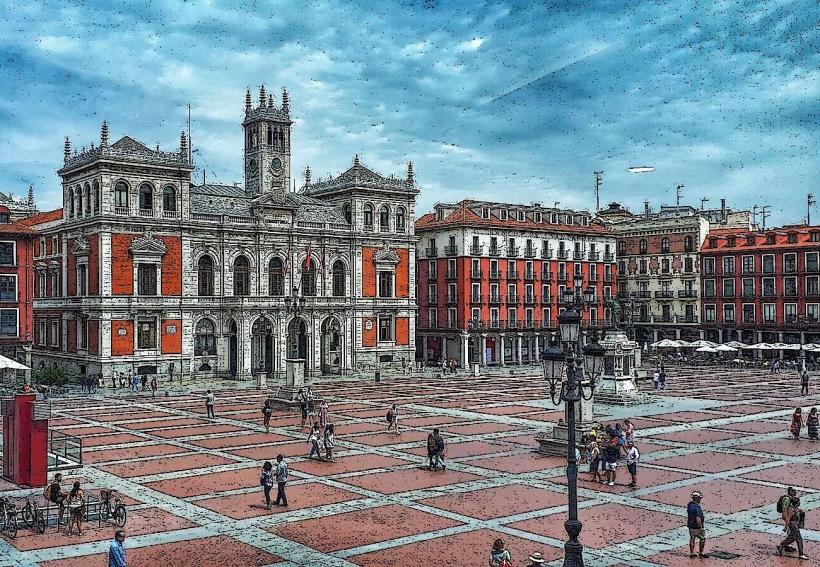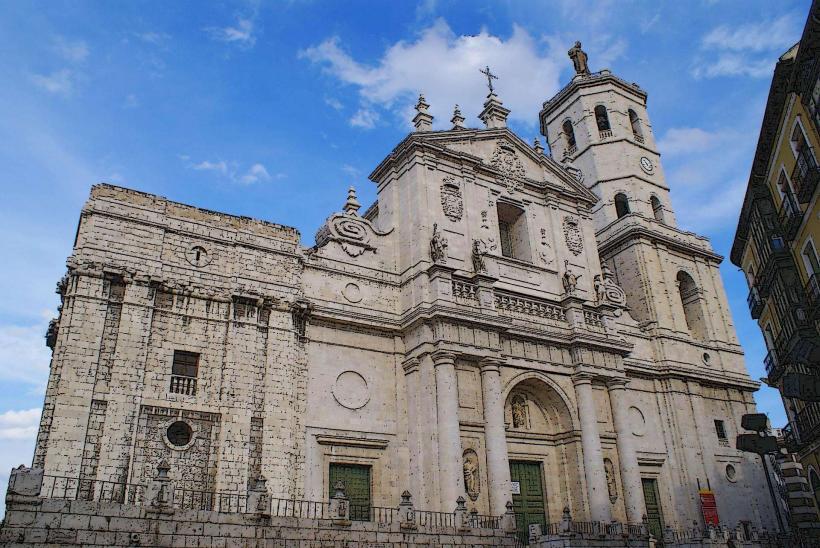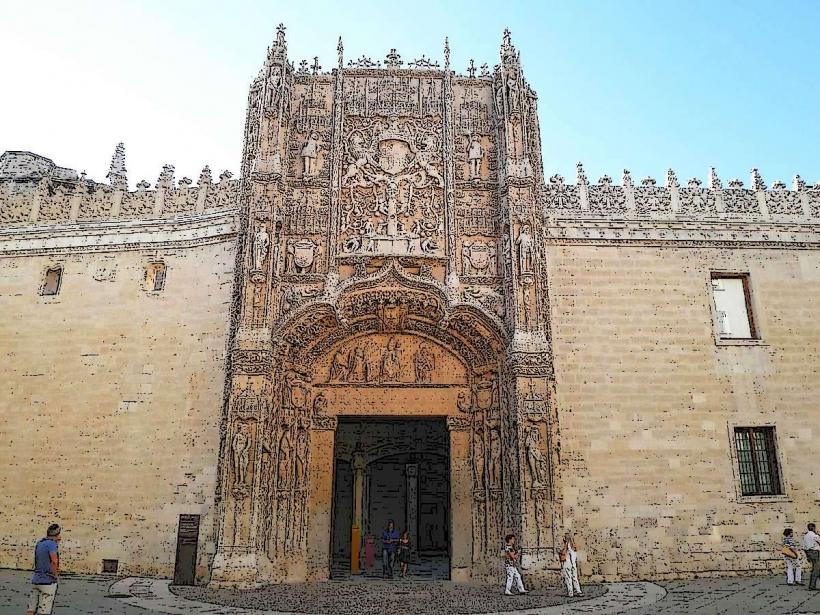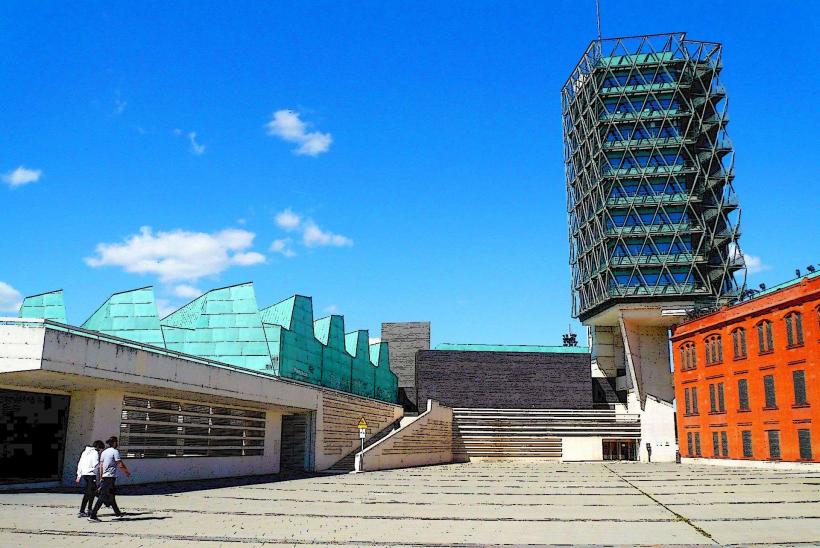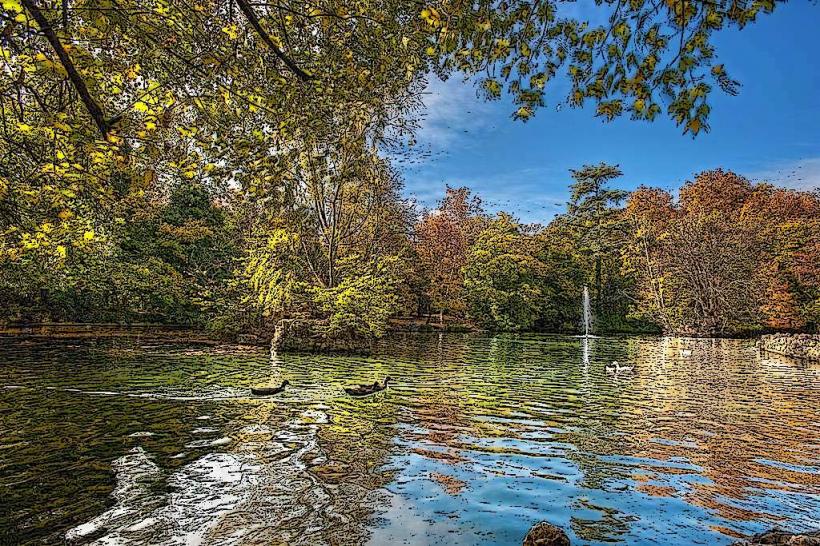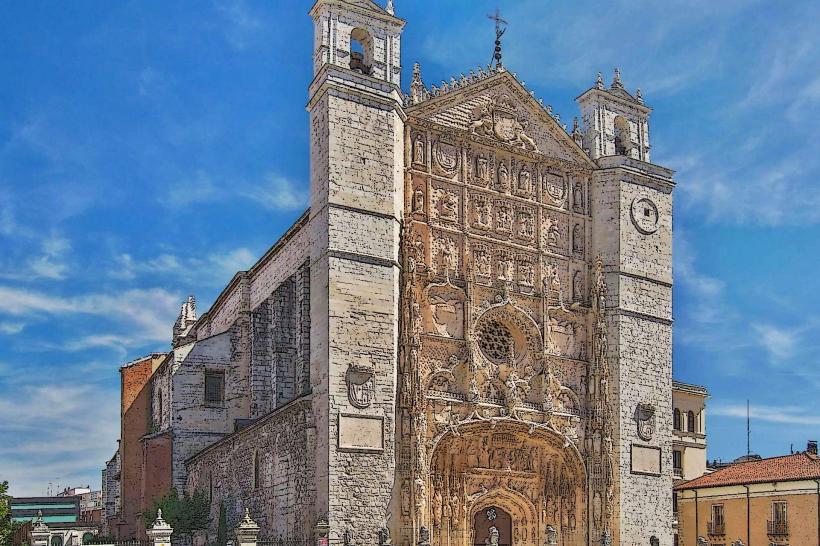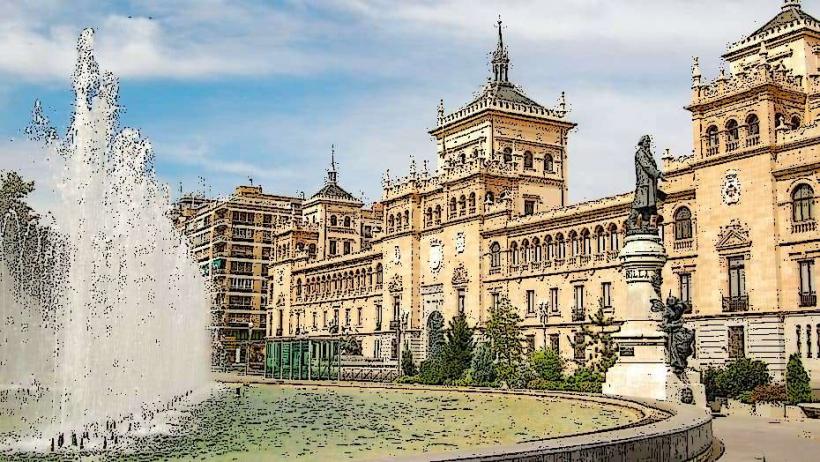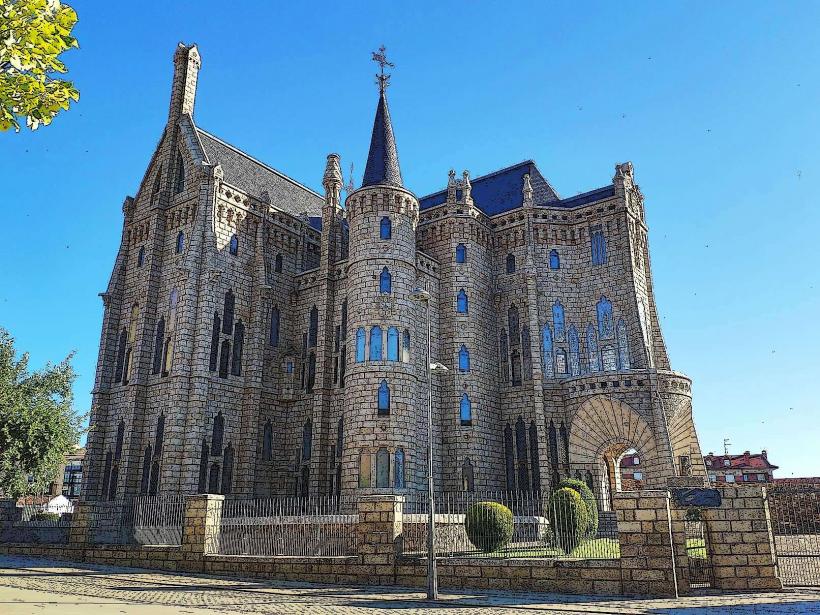Information
Landmark: Catedral de LeonCity: Valladolid
Country: Spain
Continent: Europe
The Catedral de León (León Cathedral), also known as the Santa María de Regla de León, is one of the finest examples of Gothic architecture in Spain. Located in the city of León, it is famous for its soaring spires, stunning stained-glass windows, and breathtaking architectural design. Construction of the cathedral began in the 13th century, and it was heavily influenced by French Gothic cathedrals, particularly the Cathedral of Reims.
Key Features of León Cathedral:
Gothic Architecture:
- The cathedral is a pure example of French-inspired Gothic style, with pointed arches, high vaulted ceilings, flying buttresses, and an overall sense of lightness and verticality.
- The building’s layout follows the classic Latin cross plan, with a long nave, two side aisles, and a prominent transept.
- Its two towers, the Torre de las Campanas (Bell Tower) and Torre de las Agujas (Needle Tower), rise gracefully above the city and are crowned with intricately detailed spires.
Stained Glass Windows:
- León Cathedral is renowned for its medieval stained glass windows, some of the finest in Europe. Dating back to the 13th to 15th centuries, the glasswork covers nearly 1,800 square meters, and many windows have been painstakingly restored over the centuries.
- The windows depict scenes from the Bible, lives of saints, and symbolic motifs, flooding the interior with a kaleidoscope of color and light that changes throughout the day.
- These windows are a testament to the skill of medieval artisans, and the interplay of natural light with the colored glass creates a deeply spiritual and ethereal ambiance inside the cathedral.
Interior Highlights:
- The high vaulted ceilings soar up to 30 meters (98 feet), supported by slender columns and flying buttresses. This structure allows for large windows and an impressive feeling of openness.
- The choir stalls, crafted in the 15th century, feature intricate woodwork, and each stall is uniquely carved with detailed religious scenes and symbols.
- The main altar is a masterpiece, adorned with Gothic and Renaissance elements, while the cathedral’s chapels contain valuable artworks, altarpieces, and religious relics.
Panteón de los Reyes (Pantheon of the Kings):
- Attached to the cathedral is the Royal Pantheon, a burial place for Leonese kings and queens. This area is often referred to as the “Sistine Chapel of Romanesque Art” due to its extraordinary Romanesque frescoes depicting biblical scenes, daily life, and zodiac symbols.
- The frescoes date back to the 12th century and remain remarkably well-preserved, showcasing vibrant colors and expressive figures.
- The Pantheon also houses the tombs of several Leonese monarchs, making it a significant historical site.
History and Restoration:
- Built on the site of ancient Roman baths, the cathedral’s construction began in 1205 and continued over centuries, incorporating Gothic elements typical of the French style.
- Throughout its history, León Cathedral has faced structural challenges, mainly due to its ambitious design, which maximized windows over solid walls, leading to instability. As a result, extensive restoration efforts have been undertaken over the years, especially in the 19th century.
- Restoration work continues today to preserve its stunning stained glass and architectural integrity.
The Organ:
- The cathedral’s organ is an important feature and is often used for religious services, concerts, and events. Its powerful sound complements the reverberant acoustics of the high Gothic ceilings, making it a highlight for music lovers and attendees of services or special events.
Significance and Influence:
- León Cathedral holds a place of spiritual, architectural, and cultural significance in Spain. Its style set a standard for other Spanish Gothic cathedrals and inspired subsequent designs in architecture.
- The cathedral is a part of the Camino de Santiago pilgrimage route, welcoming pilgrims and visitors from around the world who come to admire its beauty and history.
Visiting León Cathedral:
- The cathedral is open to the public, with a small fee for entrance, which supports its upkeep and preservation.
- Visitors can explore the museum inside the cathedral, which contains religious artifacts, sculptures, and historic documents related to the cathedral’s history.
- The nighttime illumination of León Cathedral highlights its architectural details, making it a stunning sight against the night sky.
Conclusion:
The Catedral de León is not only an architectural masterpiece but also a symbol of Spain’s medieval heritage and spiritual devotion. Its intricate Gothic features, awe-inspiring stained glass, and rich history make it a must-visit for anyone interested in art, architecture, or the spiritual history of Spain. The cathedral stands as one of the finest Gothic monuments in Spain, capturing the heart of León with its beauty and grace.

